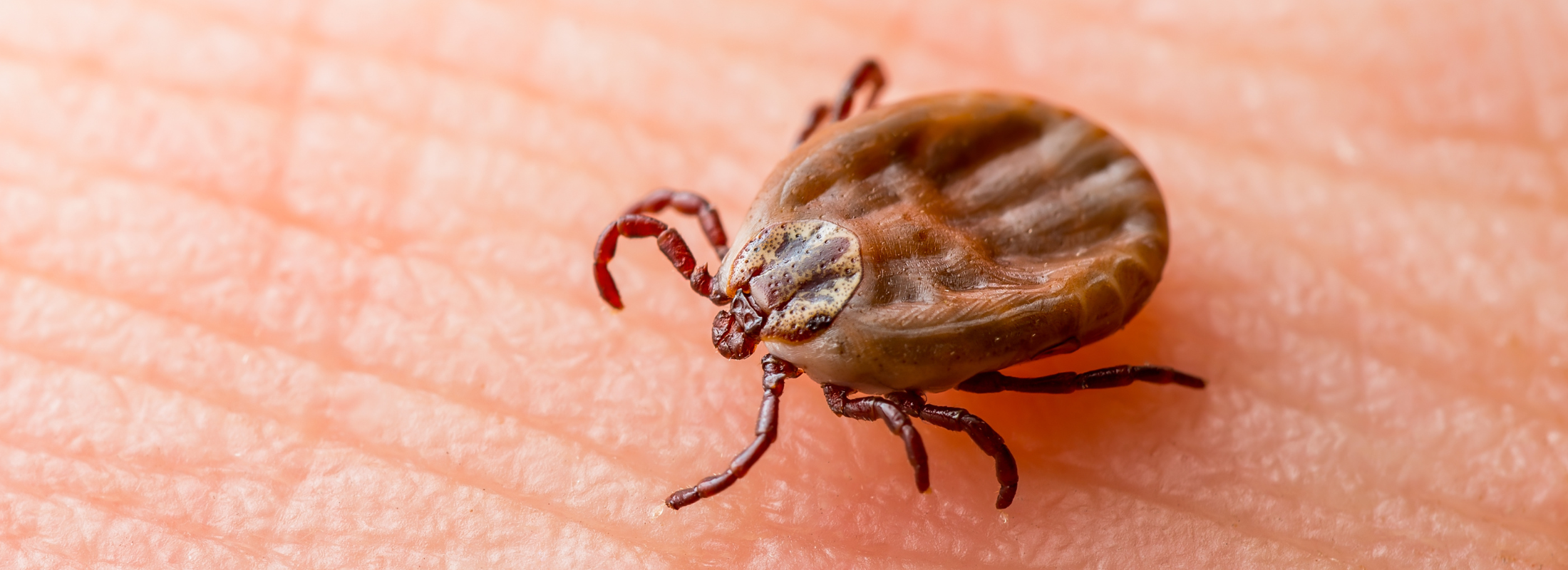
Table of Contents
In the northeast we see ticks and tick-borne illnesses, including Lyme disease, all year round, but during the warmer weather tick bites are more prevalent. Therefore, it’s important to be aware of how to prevent these bites and what do if one happens.
Tick Bites: Prevention
Generally speaking, the first step in prevention of tick bites is to dress appropriately in tick infested areas. Wooded areas and high brush tend to harbor ticks in abundance, though they do live in other places. While hiking or doing other activities in these areas, wearing light-colored clothes is recommended to make the ticks more visible. Dress in long pants and long sleeves with pants tucked into high socks. Furthermore, you can treat your clothes with permethrin as a tick repellent. You need to reapply it after 6 washings or 6 weeks. Additionally, you can use DEET bug spray on exposed skin for added protection.
Tick checks should be done after being outside. Look in hard to see areas, including behind ears, hairlines and in folds of skin. Also, dogs often bring ticks into people’s homes. Dogs should be treated with tick prevention measures and checked for ticks after being outside.
What To Do If You See A Bite
Removing a tick quickly reduces the likelihood of transmitting a tick-borne illness. Transmission of most diseases typically occurs only after a tick has been embedded for at least 48 hours.
To remove ticks, it is recommended to use fine-tipped tweezers. Pull the tick straight out, do not twist. If a piece breaks off and remains, leave it. Clean the area with alcohol. Finally, seek medical attention. If there is concern about the transmission of disease, healthcare providers may administer a prophylactic dose of antibiotics. In addition, it is recommended to seek evaluation sooner if symptoms arise, although blood tests for tick-borne illnesses can be conducted approximately two weeks after a bite.
Symptoms To Watch For
If you developed any symptoms, seek medical treatment immediately. Symptoms include-
-fever/chills
– aches/pains (including headache, muscle aches, and joint swelling)
– bullseye rash (at site of the bite)
If a tick bites you, visit your local urgent care for the removal and testing of the tick. You can also easily remove ticks at home with a pair of tweezers. Make sure you grab the tick as close to the skin as possible and pull it up and out. Tell your doctor about the tick bite and watch for signs and symptoms of a reaction and tick-borne diseases.
If you are experiencing symptoms of tick-borne diseases, don’t wait; visit your local urgent care center or a PCP for testing and treatment.
Author:
Deborah Mogelof, MD
Medical Director and Attending Physician
© Excel Urgent Care and Affiliates 2022

